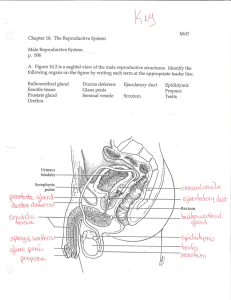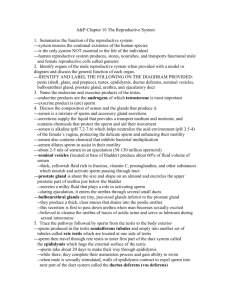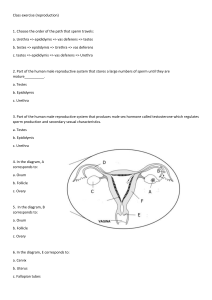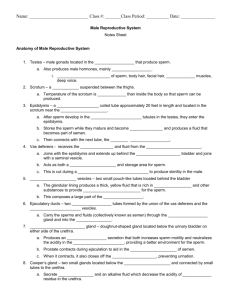Day 1 Male Anatomy - Answer Sheet
advertisement
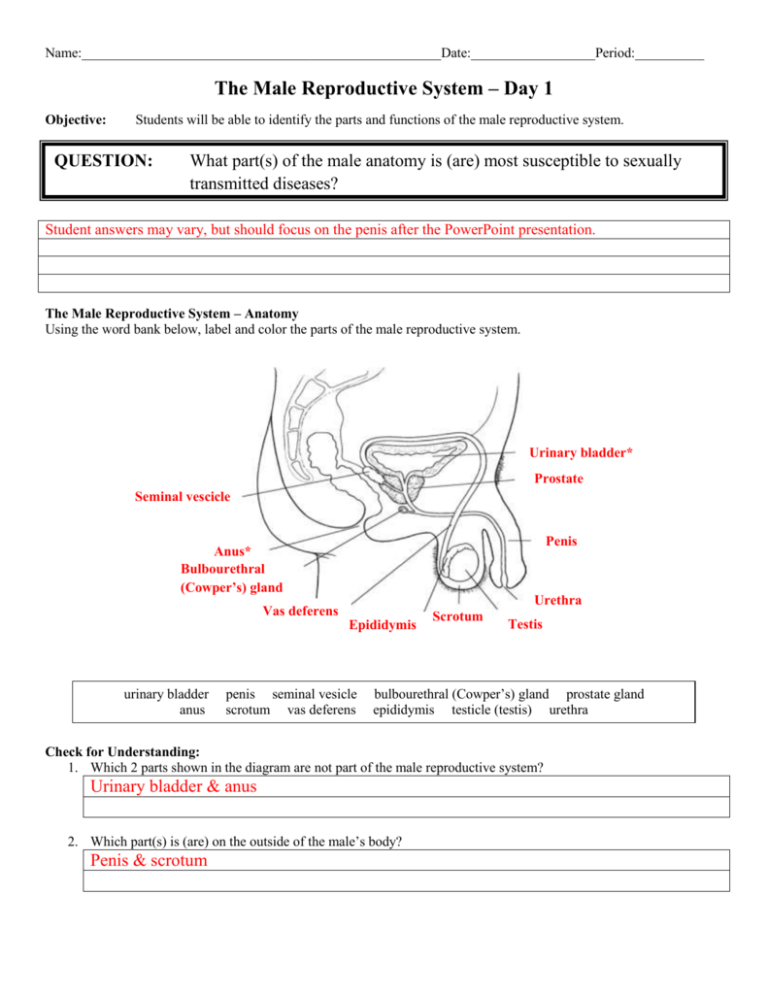
Name:____________________________________________________Date:__________________Period:__________ The Male Reproductive System – Day 1 Objective: Students will be able to identify the parts and functions of the male reproductive system. QUESTION: What part(s) of the male anatomy is (are) most susceptible to sexually transmitted diseases? Student answers may vary, but should focus on the penis after the PowerPoint presentation. The Male Reproductive System – Anatomy Using the word bank below, label and color the parts of the male reproductive system. Urinary bladder* Prostate Seminal vescicle Penis Anus* Bulbourethral (Cowper’s) gland Urethra Vas deferens Epididymis urinary bladder anus penis seminal vesicle scrotum vas deferens Scrotum Testis bulbourethral (Cowper’s) gland prostate gland epididymis testicle (testis) urethra Check for Understanding: 1. Which 2 parts shown in the diagram are not part of the male reproductive system? Urinary bladder & anus 2. Which part(s) is (are) on the outside of the male’s body? Penis & scrotum The Male Reproductive System – Function Identify which part of the male reproductive system best matches the function stated below. Anatomical Structure Anatomical Function Color on Diagram Penis organ that delivers semen to the female reproductive tract Epididymis a mass of tightly coiled tubes cupped against the testicles that acts as a maturation and storage place for sperm before they pass into the vas deferens Urethra tube that conveys both sperm and urine down the length of the penis Testis organ that produces sperm and the male hormones (ie: testosterone) Scrotum a pouch-like structure that holds and protects the testes Seminal vescicle sac-like structures attached to the vas deferens at one side of the bladder that produces a sticky, yellowish fluid that provides sperm cells energy and aids in their motility Prostate a structure that surrounds the urethra at the base of the bladder which produces a milky fluid Vas deferens tubes that transport the sperm from the epididymis to the urethra Bulbourethral (Cowper’s) gland this pea-sized structure located on the side of the urethra just below the prostate gland produce a clear, slippery fluid that lubricates and neutralizes the urethra Check for Understanding: 1. Trace the pathway of sperm from the site of origin out of the male body using the appropriate terms. Not all terms from above must be used, exclude any glands or external structures. ____testes____ → __epididymis___ → ___vas deferens___ → __urethra___ 2. Semen is composed of more than just sperm cells. What would happen to the sperm cells if the bulbourethral gland were to stop functioning? The sperms cells may be killed due to the acidic environment in the penis and/or vagina. 3. What structure do you think is more important the prostate or the seminal vesicle? Support your answer with some facts. Teacher Approval Stamp or signature Student answers may (can) vary. There is no correct answer – just needs to be supported with sound reasoning. EX: The prostate is more important because if it becomes enlarged (swollen) it can constrict the urethra and prevent the passage of sperm and/or urine.



